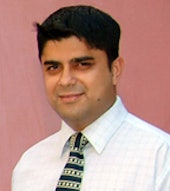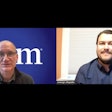
De facto. Not de jure. But that is a distinction without a difference.
There's no decree that says you need medical school, an internship, four years of general training, and two years of a fellowship before becoming a radiologist.
But there doesn't need to be. This new norm has arisen from two temporally related but uncorrelated factors: change in board structure and a job market that's as frozen as the town of Arendelle in Disney's recent musical animation.
Longer residency
Before I discuss this further, let's stand back and reflect. Some radiology residents now spend as much time in training as residents in cardiac surgery -- and even more time, in fact, than residents in plastics, orthopedics, or neurosurgery.
As much as I appreciate the knowledge base required of our profession to be clinically useful, I cannot, in good conscience, accept that the rigor and length of training of a radiologist should be greater than that of a neurosurgeon. Especially when seven years ago, radiologists without fellowships were hired in droves.
 Dr. Saurabh Jha.
Dr. Saurabh Jha.Nevertheless, this is the new reality. As the job market enters a traffic jam (temporarily, one hopes), the first few jobs will go to radiologists with dual fellowships, all other things being equal. Actually, the first class of fellows has already raised the bar. The next class will follow suit. Then the next. Then it will be tradition.
The change in structure for the board exams has augmented this reality. In the new system, board certification is granted after the certifying examination, which can be taken no sooner than 15 months after the core test. The core test is taken at the end of the third year. This means that residents graduate (I am going to avoid using "graduate" from now on because it will needlessly confuse) leave residency programs with the promissory title of "board eligible" (BE).
Radiologists typically apply for jobs early in their fellowship, at which point their curriculum vitae used to boast "board certified" (BC). Now, no more.
The American Board of Radiology (ABR) has gone out of its way to make it clear to hiring practices and academic centers that board-eligibility status should not be used against the applicant.
But just because something shouldn't be done, that doesn't mean it won't be done.
Who would you hire?
Imagine you are the chief recruiting officer of a large practice that advertised for a "body imager who can read PET/CTs, mammograms, and emergency neuroimaging." You are sorting through 150 applicants; 140 are board-eligible (first fellowship). Then you come across a board-certified radiologist who is in the middle of a neuroradiology fellowship (second fellowship) after completing a body fellowship.
Who gets the job, all things being equal? The board-eligible (solo-fellowship) fellow or the board-certified (dual-fellowship) fellow?
Would you not, in the slightest, be influenced by the fact that board-certified fellows will not be consumed by boards-itis (chronic, intractable anxiety in anticipation of the boards), particularly as you will so easily recall your own boards-itis? You will instinctively know that BC radiologists can be conscripted immediately to high-volume reading, so they can prove their mettle to earn partnership after the long, protracted road.
It may also be administratively easier to hire a board-certified radiologist than a board-eligible one. Imagine all the forms that would have to be refilled when board eligibility morphs into board certification.
Even if employers do not intrinsically value BC over BE, the supremacy of BC is only a matter of time, and applicants will emphasize this distinction in their cover letters: "I am a board-certified radiologist, not board-eligible, which means you don't have to worry about me taking time off in the first three months of my job, and I can spend night and day learning the ropes of your practice."
When times are tough, every little drop counts. Employment Darwinism can be both ingenious and merciless.
Second fellowships permit radiologists to clear their boards during their second fellowship, i.e., during their training. Yes, I know the intent of the new boards was that the final consecration be during practice, not training. But history has a cruel sense of humor. To adapt a line from George Santayana: Those who try to change history are condemned to watch it repeat.
Rich in RVU potential
So what does all of this mean?
Undoubtedly, the caliber of new radiologists will be raised. With residents now concentrating their fourth year on a single area, they could emerge with triple specialization. Imagine radiologists with the combination of musculoskeletal/women's imaging/neuroradiology. What an RVU-rich tour de force!
This is not the specialization that one originally envisioned. Nor is it generalization in its original semantic sense. These are multispecialty general radiologists.
These multispecialists will satiate clinicians from multiple disciplines: a neurosurgeon by morning, an orthopedist by afternoon, a gastroenterologist by evening, and an emergency physician after dinner. Quality of care will improve. This is truly one silver lining for the profession.
The trend will further prevent radiologists from being compartmentalized into lonely subspecialist caves. I believe this is a good thing. Each radiologist will be both the archipelago and the bridge between the disparate clinical islands.
In fact, even fellows who are fortunate enough to find jobs in their first fellowship are aspiring to be multispecialists. Often they use their elective and spare time in their fellowship to learn skills that their practice expects them to have, such as performing breast biopsies and lumbar punctures and reading PET/CT scans. In a sense, their fellowships have become an extension of generality.
The dual fellows will distort -- and perhaps even out -- the changing contours of imaging supply and demand. Overnight coverage by BC/BE radiologists so that final reads are available for the emergency department could be a moonlighting opportunity for the second-year fellows, which would mitigate some of the salary decrement suffered because of prolonged training. Paradoxically, the availability of second fellows will both induce demand for final reads and provide the supply.
The overall effect on jobs is difficult to predict.
The entrance of highly skilled, protean radiologists into the workforce might motivate the more mature radiologists to cash in their Social Security and retire, though I'm not yet willing to bet the Dow on that happening.
Academic centers are increasingly internalizing smaller radiology practices that are unable to stand upright because of regulatory onslaught. Second-time fellows are relatively cheap labor who can pick up the new slack while the department enjoys the new spoils. These centers might be further disinclined to hire new radiologists, at the margins.
The availability of second-time fellows would ameliorate the effects of there being fewer residents, which might result from the diminishing popularity of radiology among medical students.
Are there any genuine downsides?
The prospect of one more year in training, with the opportunity costs it entails, might not affect fourth-year residents for whom the end is nigh and the choice is naught. But medical students might weigh the increasing costs of becoming a radiologist. Or they might not.
The permutations and combinations of economic and regulatory change on the labor market are so numerous that one is left choosing what one inherently wishes.
Leave that aside for now, and let's hail the multispecialist radiologist! The General Radiologist on Steroids. Welcome!
Note: The author wishes to thank Neil Lall, fourth-year resident at Ochsner Clinic, for his thoughts on the subject..
Dr. Saurabh Jha is an assistant professor of radiology at the Hospital of the University of Pennsylvania. He is a superspecialized cardiovascular imager but will grudgingly admit that he is really just a general radiologist who likes the heart more than the posterior fossa.
The comments and observations expressed herein are those of the author and do not necessarily reflect the opinions of AuntMinnie.com.



















